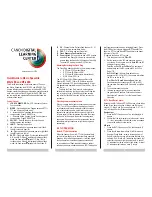
46
BASIC IMAGE RECORDING
Flash Precautions
Take care that your fingers do not block the flash when you
hold the camera. Covering the flash with your finger can
greatly reduce its effectiveness.
• The approximate effective range of the flash is shown
below. The flash is unable to adequately illuminate a
subject that is outside this range.
0.8 meter to 2 meters (2.6´ to 6.6´) (ISO Sensitivity :
“Auto”)
• The flash takes anywhere from a few seconds as long as
10 seconds to attain full charge after being fired. The
actual time required depends on the battery level,
temperature, and other conditions.
• The flash does not fire during movie recording. This is
indicated by
on the monitor screen.
• The flash unit may not be able to charge when battery
power is low. Low battery power is indicated by the
on
the monitor screen, and when the flash fails to fire
properly resulting in poor image exposure. When these
symptoms occur, charge the camera’s battery as soon as
possible.
Flash
■
About Red-eye Reduction
Using the flash to record at night or in a dimly lit room can
cause red spots inside the eyes of people who are in the
image. This is caused when the light from the flash reflects
off of the retina of the eye. Red-eye reduction fires a pre-
flash, which causes the irises in the eyes of any people in
the image to close. This is followed by another flash
operation when the image is actually recorded.
IMPORTANT!
Note the following important points when using red-
eye reduction.
• Red-eye reduction does not work unless the people
in the image are looking directly at the camera
(flash). Before pressing the shutter release button,
call out to the subjects so they all look at the camera.
• Red-eye reduction may not work very well if the
subjects are located far away from the camera.




































